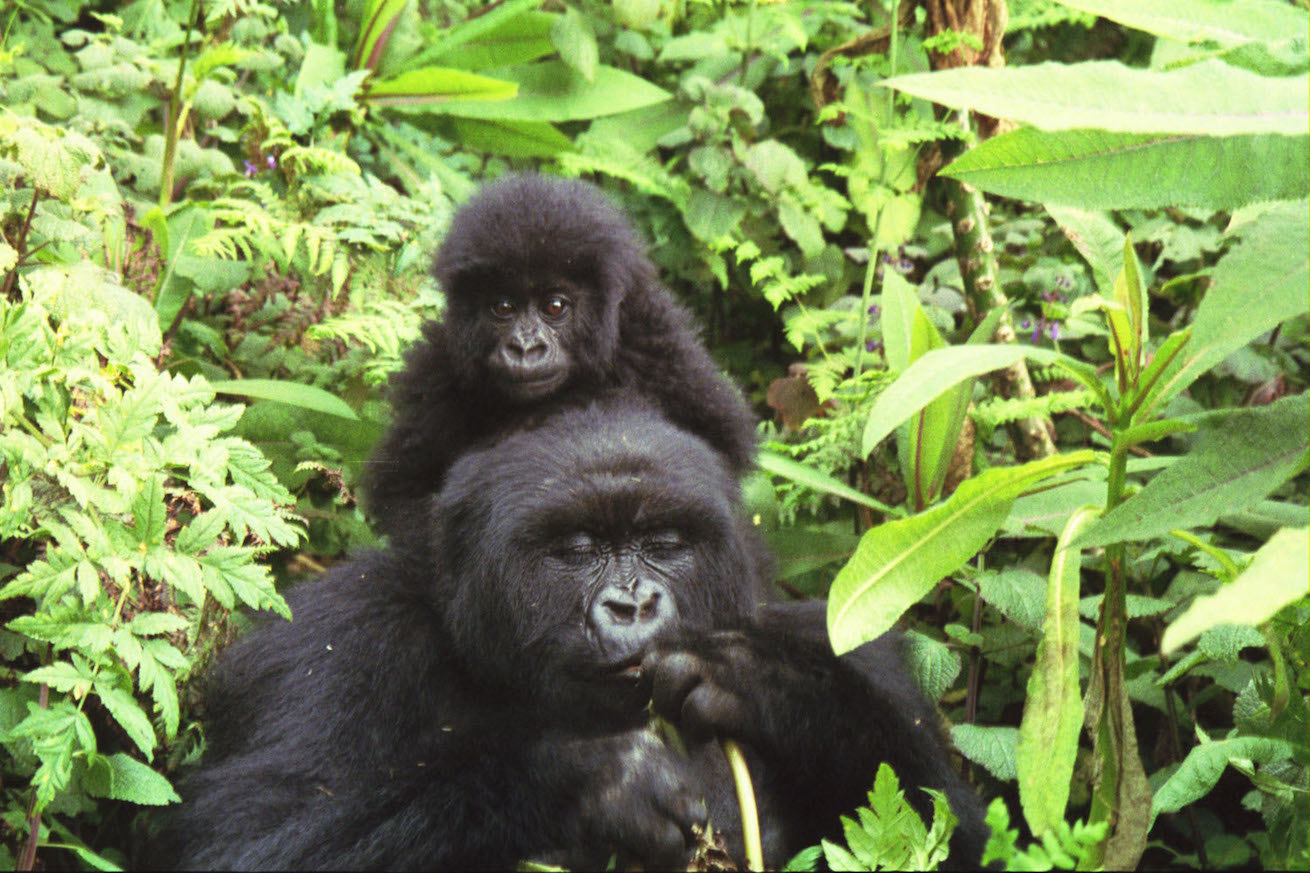A recent study has discovered that a need for sodium is likely why mountain gorillas in Rwanda’s Volcanoes National Park raid eucalyptus plantations outside the park. Eucalyptus bark contains significantly more sodium—100 times more—than the gorillas' regular diet, accounting for up to two-thirds of their total sodium intake. To address this, researchers suggest creating a buffer zone with plants that are not appealing to the gorillas, potentially reducing the crop raiding that causes conflict between humans and gorillas.
Tourists pay $1,500 for the unique chance to spend an hour with these magnificent apes. This high tourism revenue supports the gorillas, making Volcanoes National Park a conservation success story.
However, for nearby communities, living close to these famous animals can be challenging. Gorillas frequently raid farms, damaging essential crops. “Crop raiding is the main source of conflict between local dwellers and wildlife,” says Cyril Grueter, a biological anthropologist from the University of Western Australia and the study's lead author.
To reduce this conflict, researchers from the Karisoke Research Center, Volcanoes National Park, and the Max Planck Institute for Evolutionary Anthropology investigated why gorillas leave the park. “We found that when the gorillas exit the national park, they often head straight to eucalyptus trees planted outside the park,” Grueter says.
Previous studies showed that the gorillas choose food in the park based on protein content and digestibility. Eucalyptus bark is low in both, leading Grueter and his team to explore other nutritional factors attracting the gorillas.
Sodium, an essential micronutrient, emerged as a likely factor. “Sodium deficit can cause a specific hunger for it, prompting animals to seek it out,” Grueter explains. Between 2009 and 2010, the team monitored the diets of 22 gorillas across three family groups and analyzed the sodium content of their food.
“Our analyses showed that eucalyptus is more than a hundred times richer in sodium than the gorillas’ staple foods inside the park,” Grueter says. The study found that up to two-thirds of the sodium in the gorillas’ diet came from eucalyptus bark outside the park. Some gorillas also venture into higher-altitude areas to feed on sodium-rich plants like giant groundsels and lobelias.
All animals need a certain level of sodium in their diet, and when their usual food sources lack it, they find other ways to supplement their intake. A similar study found that mountain gorillas in Bwindi National Park, Uganda, get 95 percent of their sodium from dead wood, which has little other nutritional value. In Mount Elgon National Park on the Kenya-Uganda border, elephants use their tusks to extract sodium-rich rock deposits from underground caves.
Grueter believes the high proportion of sodium from eucalyptus consumption strongly suggests sodium is driving the gorillas’ crop raiding. He hopes this information can help reduce human-gorilla conflict.
Shane McGuinness, a conservation researcher from the National University of Ireland, who was not part of the study, witnessed human-wildlife conflict firsthand around Volcanoes National Park. Although gorillas were not the most frequent crop raiders, they were regular offenders.
McGuinness also observed the gorillas’ preference for eucalyptus. While mature eucalyptus trees can withstand de-barking and still provide timber, young trees, which gorillas favor, are more susceptible to damage. When young eucalyptus trees lose their bark, their growth and survival are compromised.
Due to the risk of disease transmission between humans and gorillas, locals are prohibited from chasing the gorillas away from their crops. Park authorities have implemented measures like walls and ditches to deter crop raiding, which have worked against buffalo but not against agile primates.
The area around the park has a very high human population density for a rural region, with over 700 people per square kilometer in some areas. Locals rely on subsistence farming on small plots, so even minor crop damage can be devastating.
McGuinness notes that the high-profile nature of gorilla conservation complicates matters. Mountain gorilla conservation is a rare success story, with the species’ population growth leading to their reclassification from critically endangered to endangered by the IUCN.
The high fees tourists pay to see gorillas generate substantial revenue—$17.1 million in 2017. This income fully funds Volcanoes National Park and helps subsidize Rwanda’s other national parks. To support conservation, 5 percent of the income from gorilla permits is allocated to community projects in the areas surrounding the park. However, McGuinness points out that locals closest to the park, whose crops are raided, do not see these benefits and still bear the costs—a view supported by other studies on community conservation around Volcanoes National Park. “Unfortunately, many farmers believe the government prioritizes conservation over development,” he says.
With high human density around the park and growing gorilla numbers within it, tensions are likely to persist. Grueter worries that climate change and increased gorilla populations could deplete food reserves in the park, forcing gorillas to seek food outside, exacerbating conflicts. One proposed solution is a buffer zone of nutritionally unattractive plants around the park to deter gorillas from raiding crops.
Despite the challenges, Grueter is committed to protecting Rwanda’s mountain gorillas: “They are simply stunning creatures without which this world would be a poorer place.”
